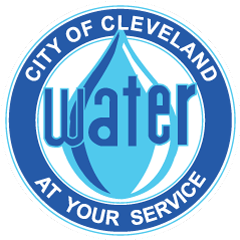Check. Test. Date
Cleveland Water customers can be confident that the water delivered to your home is safe. We take several actions to protect you and your family from the risk of lead. However, there may be lead in your home plumbing.
Places that may contain lead include city-owned service lines, customer-owned service lines, and household plumbing and fixtures. There are several actions you can take to know the potential for lead in your home plumbing.
Check
Check the type of material your city-owned service line is made of by contacting us at leadlookup@clevelandwater.com or 216-664-2882*. City-owned service lines are the responsibility of Cleveland Water. In general, if your home was built after 1953 or your connection is larger than one inch in diameter, it is unlikely that you have a lead city-owned service line.
*New interactive map coming soon!
Test
Use the magnet and penny test to determine what type of material your service line is made from and record the results using our Lead Line Reporting Form. The customer-side service line extends from the curb stop into your basement or crawl space. Identification of the type of material used for service lines can be done using a magnet and a penny. Your service line material should be tested where the line first enters the home, which is typically in the basement before the water meter.
Date
Knowing the date of installation of the plumbing in your home will help you understand the risk of lead exposure through pipes, solder, and faucets. In general, plumbing or fixtures installed before 1986 potentially have lead, as can faucets made between 1986 and 2014
- 1954 - Homes in the Cleveland Water service area built this year or after should not have lead city-owned service lines as Cleveland Water stopped using lead in 1953.
- 1986 - Amendments to the Safe Drinking Water Act were enacted to help reduce lead in drinking water. The amendments banned the use of lead pipes for drinking water, reduced the allowable level of lead in plumbing solder to less than 0.2%, and reduced the allowable level of lead in brass used for drinking water fittings and fixtures to less than 8%.
- 1997 - Cleveland Water begins adding orthophosphate during the water treatment process. This food-grade chemical forms a protective coating on the inside of pipes and plumbing, reducing the likelihood of lead dissolving into the water. Since then, our lead testing results have been below the federal requirement of 15 parts per billion.
- 2014 - The Reduction of Lead in Drinking Water Act reduced the allowable level of lead in brass alloys used for faucets, fittings, and meters for drinking water to less than 0.25%.
- 2018 - New Ohio Administrative Code rules go into effect requiring specific notifications, offers for filters, sampling, etc. for water line repairs and replacements in areas that may have lead service lines.
For more information or questions, please contact our Lead Inquiry Line at 216-664-2882.
